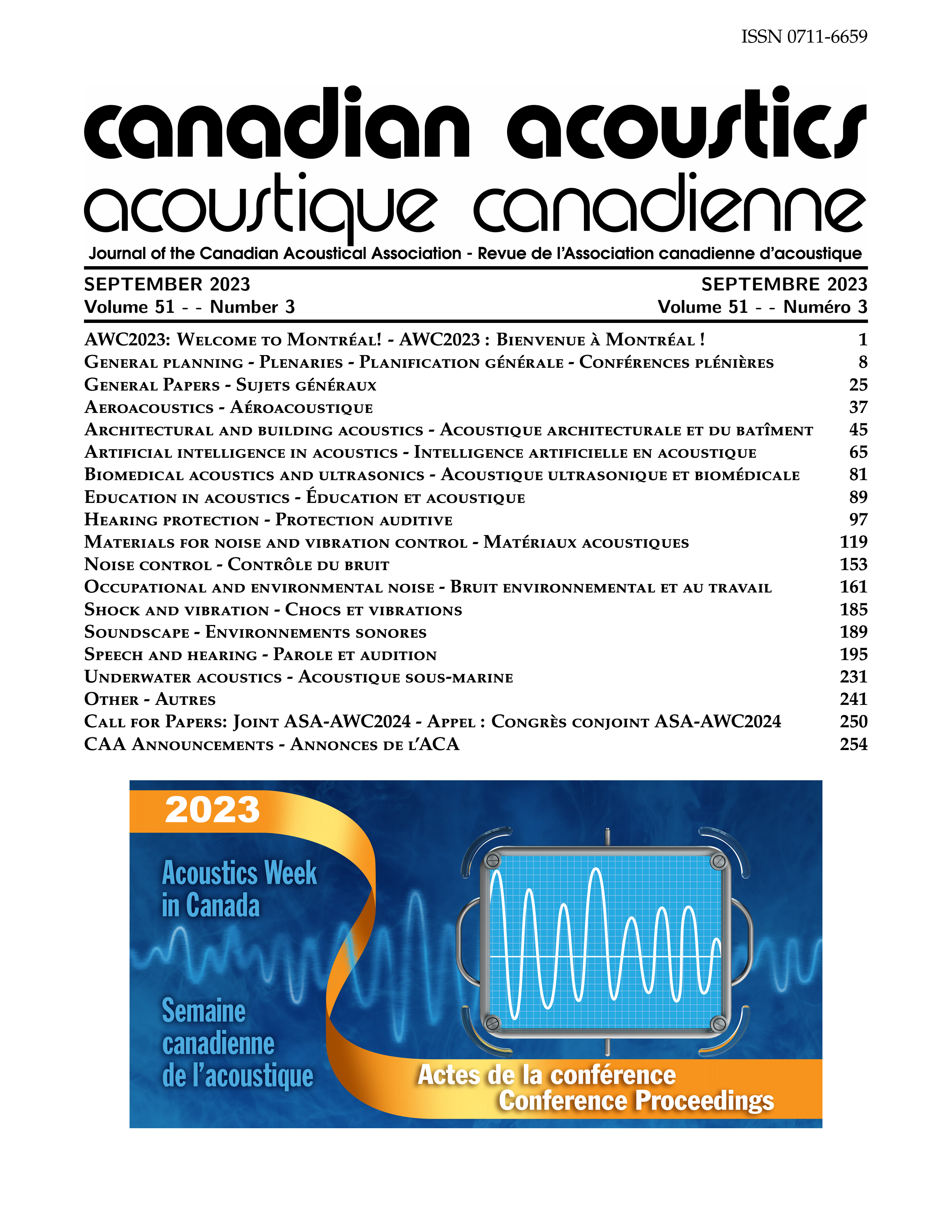Wall-Pressure Spectrum Model Based on Artificial Neural Networks Predictions
Abstract
We propose machine learning approach using Artificial Neural Networks (ANNs) to model the wall-pressure spectra (WPS) beneath turbulent boundary layers. Classical (semi-empirical) wall-pressure models are based on scaling laws according to inner and/or outer parameters of the boundary layer. In this approach, the complete boundary layer profile (i.e. tangent velocity as a function to the wall-normal distance) is provided as an input into the ANN. The aim of this methodology is to obtain more insight on the relationships that may arise between the turbulent boundary layer and its corresponding WPS and that have not been assessed in the literature.The analysis and training of the ANN are performed on data from Large Eddy Simulations (LES) produced by the European SCONE project. The database consists on a set of LES simulations with mach number varying in between 0.3 and 0.7, as well as Reynolds numbers in between 8.3e5 and 2.4e6 and angles of attack from 1º to 7º. The set of data includes zero and adverse pressure gradient effects, including flows experiencing strong adverse pressure gradients. In order to produce the noise prediction, the approach that has been used is the following one. An autoencoder, composed by a encoder and decoder, is trained in order to compress the boundary layer profile into a minimal amount of parameters (reduced latent space) that permit to retrieve back the shape of the profile. This latent space is used together with the flow conditions to train the ANN to produce a prediction of the WPS. It has been found that the predictions on the WPS in the high-frequency content are more reliable than on the low frequency range since more data is available for training. Also, there is large effect of the recirculating regions on the boundary layer plays an important role in the noise prediction.Additional Files
Published
How to Cite
Issue
Section
License
Author Licensing Addendum
This Licensing Addendum ("Addendum") is entered into between the undersigned Author(s) and Canadian Acoustics journal published by the Canadian Acoustical Association (hereinafter referred to as the "Publisher"). The Author(s) and the Publisher agree as follows:
-
Retained Rights: The Author(s) retain(s) the following rights:
- The right to reproduce, distribute, and publicly display the Work on the Author's personal website or the website of the Author's institution.
- The right to use the Work in the Author's teaching activities and presentations.
- The right to include the Work in a compilation for the Author's personal use, not for sale.
-
Grant of License: The Author(s) grant(s) to the Publisher a worldwide exclusive license to publish, reproduce, distribute, and display the Work in Canadian Acoustics and any other formats and media deemed appropriate by the Publisher.
-
Attribution: The Publisher agrees to include proper attribution to the Author(s) in all publications and reproductions of the Work.
-
No Conflict: This Addendum is intended to be in harmony with, and not in conflict with, the terms and conditions of the original agreement entered into between the Author(s) and the Publisher.
-
Copyright Clause: Copyright on articles is held by the Author(s). The corresponding Author has the right to grant on behalf of all Authors and does grant on behalf of all Authors, a worldwide exclusive license to the Publisher and its licensees in perpetuity, in all forms, formats, and media (whether known now or created in the future), including but not limited to the rights to publish, reproduce, distribute, display, store, translate, create adaptations, reprints, include within collections, and create summaries, extracts, and/or abstracts of the Contribution.


